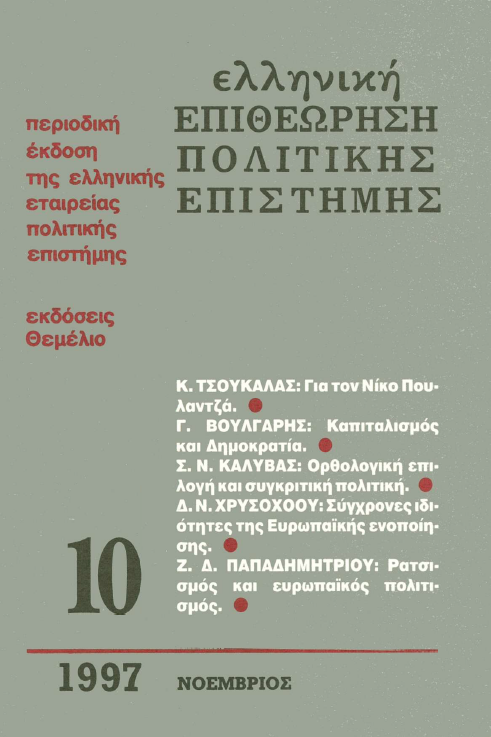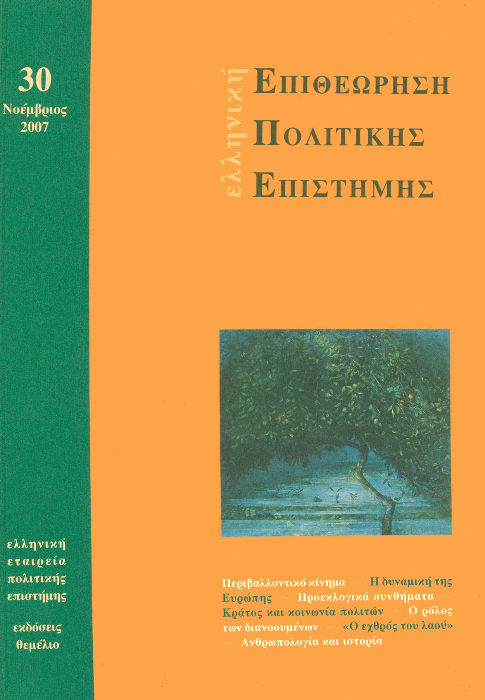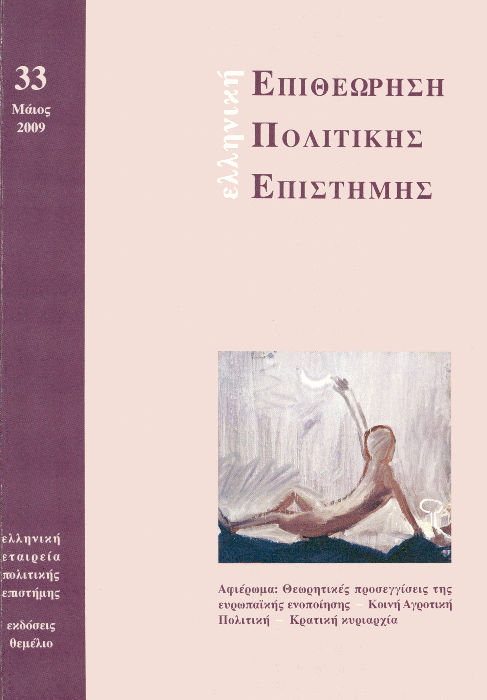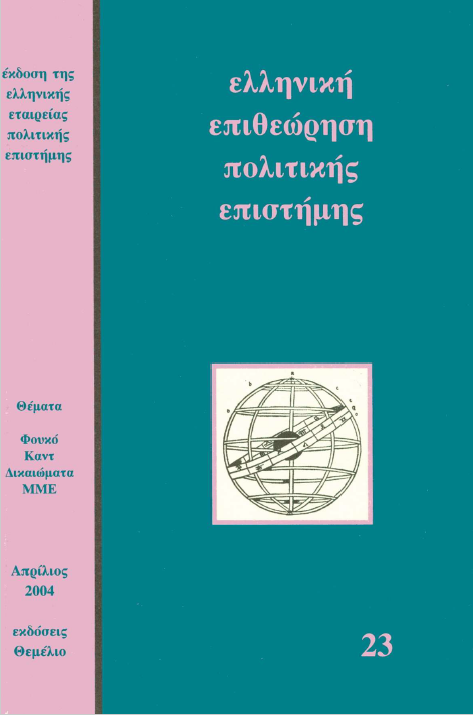Σύγχρονες ιδιότητες της Ευρωπαϊκής ενοποίησης
Аннотация
Δεν διατίθεται περίληψη.
Article Details
- Как цитировать
-
Χρυσοχόου Δ. Ν. (2017). Σύγχρονες ιδιότητες της Ευρωπαϊκής ενοποίησης. Ελληνική Επιθεώρηση Πολιτικής Επιστήμης, 10, 122–142. https://doi.org/10.12681/hpsa.15105
- Выпуск
- Том 10 (1997)
- Раздел
- Άρθρα

Это произведение доступно по лицензии Creative Commons «Attribution-NonCommercial-ShareAlike» («Атрибуция — Некоммерческое использование — На тех же условиях») 4.0 Всемирная.
Οι συγγραφείς θα πρέπει να είναι σύμφωνοι με τα παρακάτω: Οι συγγραφείς των άρθρων που δημοσιεύονται στο περιοδικό διατηρούν τα δικαιώματα πνευματικής ιδιοκτησίας επί των άρθρων τους, δίνοντας στο περιοδικό το δικαίωμα της πρώτης δημοσίευσης. Άρθρα που δημοσιεύονται στο περιοδικό διατίθενται με άδεια Creative Commons 4.0 και σύμφωνα με την οποία μπορούν να χρησιμοποιούνται ελεύθερα, με αναφορά στο/στη συγγραφέα και στην πρώτη δημοσίευση για μη κερδοσκοπικούς σκοπούς και με δικαίωμα τροποποίησης μόνο με παρόμοια διανομή (αν αναμείξετε, τροποποιήσετε, ή δημιουργήσετε πάνω στο υλικό, πρέπει να διανείμετε τις δικές σας συνεισφορές υπό την ίδια άδεια όπως και το πρωτότυπο).





